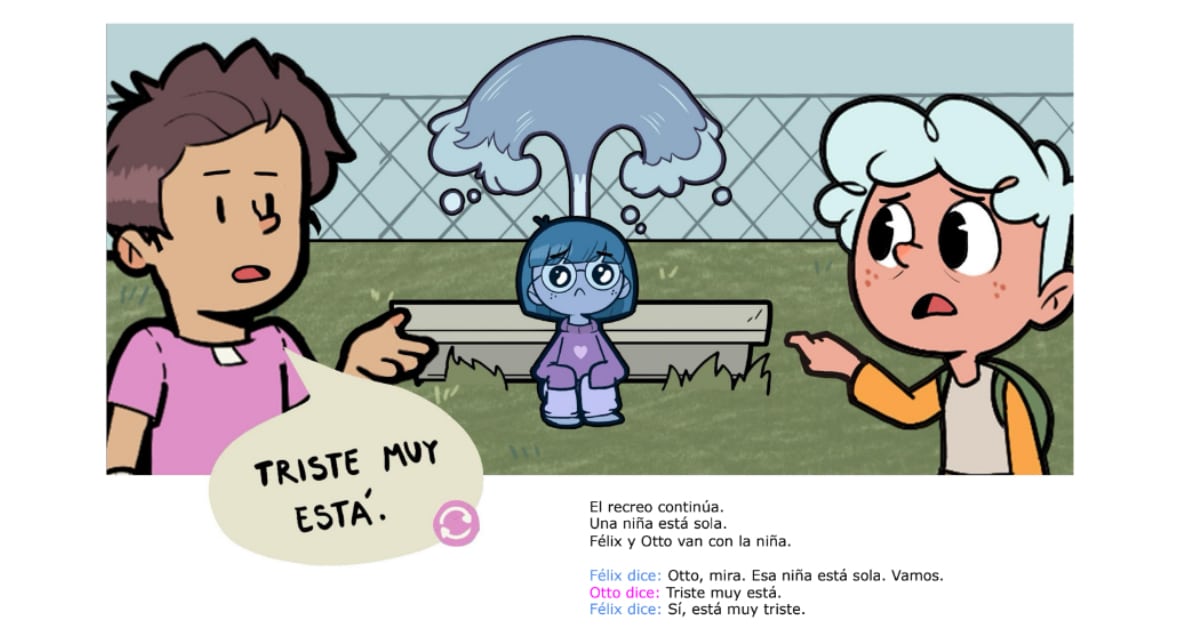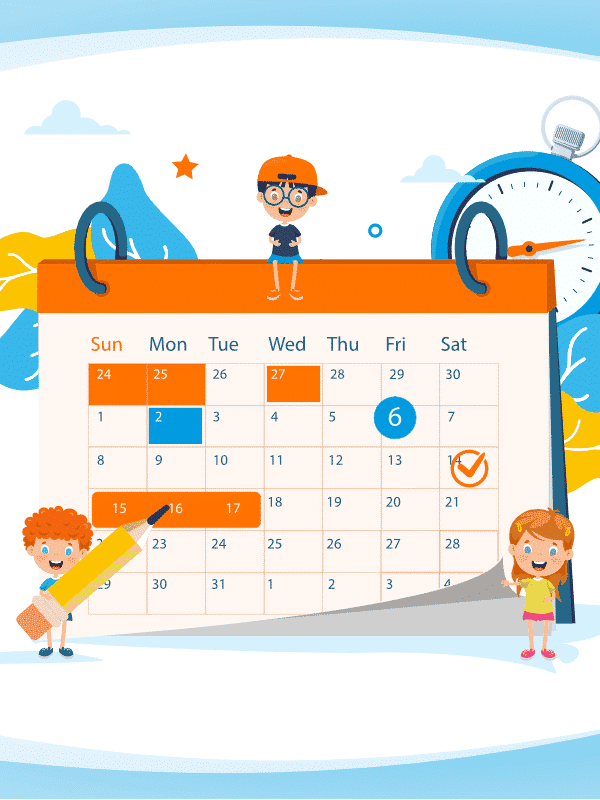Being a kid is awesome, but also quite confusing at times. You’re experiencing different emotions for the first time! On top of that, you have to learn how each of those emotions are called. Anger, disgust, fear, happiness, love, sadness… This way you can express how you feel to others.
What is this? Am I… sad?
Thankfully, since they’re born, kids get to see their loved ones experience these emotions. As well as listening to the people around them talk and the conversations flow so naturally. All of this will help them acquire the vocabulary they need to communicate their emotions.
But what happens when we add Spanish to the mix? Now they must also learn vocabulary for emotions in Spanish. How do kids express in Spanish their disgust or fear over something? How can they tell you when they feel angry?
Or what are some Spanish words and phrases they can use when they’re sad? It’s very important that they communicate these feelings even in their second language.
This is when the immersion method comes into the picture. It’s similar to the way we learn our mother tongue, very naturally, through real-life examples. So, it’s perfect to teach our children how to manifest their feelings and emotions in Spanish.
That’s exactly what we worked on this week at TruFluency Kids’ classes by reading our original book “El niño nuevo” and practicing some vocabulary for emotions. Here’s a sneak peek of what we do in class.
“El niño nuevo” (The new kid)
“El niño nuevo” is the story of Félix, the new kid in school, who floats all the time! Gradually, he’ll meet his classmates and see that they also have their own special quirks.
This week we read chapter 4, where Félix meets Lulú. Here’s the first page of the fourth chapter of this original Spanish story for Spanish learners from TruFluency Kids. All keywords and most used phrases are in bold:
El recreo continúa. / The recess continues.
Una niña está sola. / A girl is alone.
Félix y Otto van con la niña. / Félix and Otto go with the kid.
Félix dice: Otto, mira. Esa niña está sola. Vamos. / Félix says: Otto, look. That girl is alone.
Otto dice: Triste muy está. / Sad very she’s.
Félix dice: Sí, está muy triste. / Yes, she’s very sad.

Spanish Activity for Class
During our classes we like to read different TruFluency Kids’ original books, in this case it was “El niño nuevo”. But we also love to make different activities in Spanish. So kids practice what they’ve learned while having a good time.
Here’s one activity that we did this week:
We first practiced with vocabulary for emotions and emotional states in Spanish.
For example:
- “Estoy triste” (I’m sad) – “Estoy llorando” (I’m crying).
- So, in a full Spanish sentence this would be expressed as: “Estoy llorando, porque estoy triste” (I’m crying because I’m sad).
To make sure kids really understand, and learn the vocabulary, we will practice with it two or three times. Then, to reinforce it, we will play a Wordwall matching pairs game. It’s going to be so much fun!
As the final part of this activity, we will show on a slide some questions and answers in Spanish. All of which will have some blanks where there are missing words from the vocabulary we just learned.
We’ll show images, so kids know which emotion we’re talking about. With that information, kids will have to complete the blanks with the correct Spanish words.
To add more context (and fun), throughout the whole class the teacher will make gestures related to the emotions they’re teaching.
This is just a small part of what we do in class.
Ask Spanish Questions to Your Kids to Practice Spanish Speaking at Home
You can also ask Spanish questions at home related to the book we read in class, so your kids answer in Spanish. This way, they’ll keep practicing their vocabulary after school.
For example, in our PDF for parents about “El niño nuevo” Spanish curriculum, we recommend you ask:
- ¿Por qué llora Lulú? = Why is Lulu crying?
- So your kids can answer: Porque es azul. = Because she is blue.
Remember children must answer in complete sentences, so they gain confidence in their fluency. Don’t accept yes/no answers nor single word answers.
What Do Our Kids’ Spanish Classes Include?
If you love learning through Spanish stories, we have great news! Our curriculum comes with awesome tools to help your kids have even more fun while learning:
- A Spanish Interactive StoryTelling Book to read at home. Stories are a great way to remember new words and phrases. As well as to get kids talking about what happened to Félix and his friends!
- A song to help solidify the vocabulary and phrases in a fun and memorable way
- Live classes to practice speaking in real conversations (if you’re interested)
Now It’s the Perfect Time to Join TruFluency Kids!
If you loved our approach to learning the Spanish language, you’re right on time to join TruFluency Kids! Spanish is currently one of the most spoken languages around the world. So, it’ll be super beneficial for your children.
We’re committed to teaching your kids online Spanish lessons that will lead them to FLUENCY confidence.
To achieve that we instruct through all kinds of Spanish activities, like singing, dancing, cooking, doing crafts, and more.
On top of that, we base all our lessons on the Bellieu Method, created by our founder and CEO, Micah Bellieu. It consists of encouraging children to speak using all they’ve learned so far. So, they achieve Spanish fluency. Remember: Practice makes perfect!
Drop into one of our classes anytime to try it out!
¡Nos vemos en clase!


